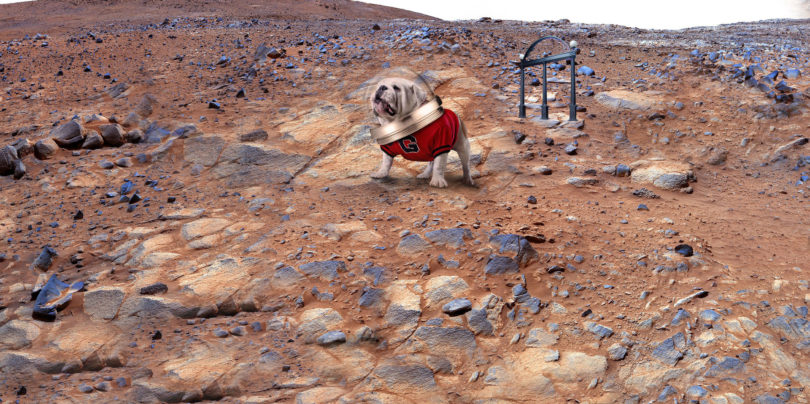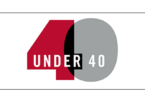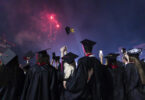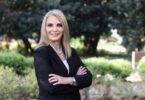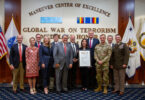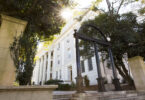University of Georgia administrators and staff members received an unexpected treat when they toured the NASA Ames Research Center in Mountain View, California, on July 17-an extremely high-resolution photo featuring Uga IX and the UGA Arch on the surface of Mars.
The image, which has now circulated through various UGA social media channels, flashed onscreen on the 11th fastest supercomputer in the world, the NASA Ames Supercomputer. The photo’s background — which features the rocky Martian landscape — was taken by a Mars rover and transmitted back to Earth.
“My team took the idea to feature UGA and ran with it — they added the space helmet for Uga IX so that he could, of course, continue breathing properly on Mars while he explored,” said Roger Hunter, a 1978 UGA alumnus and associate director for programs at NASA Ames. “They added the famous Arch in the background, which we explained was Uga IX’s launch of a campus on his new Martian outpost.”
Hunter was previously instrumental in UGA becoming the world’s first university to have a star system named after it and gave the undergraduate commencement address at UGA this past December. He arranged the tour, which included UGA President Jere W. Morehead, Vice President for Development and Alumni Relations Kelly Kerner and other university staff members, who were on the West Coast from July 12-17 for a fundraising and development trip.
“This university is important, not just for the state of Georgia, but for the United States, as well as this planet,” Hunter said. “We hope UGA will view NASA Ames as another good friend in the Dawg Nation.”
The tour highlighted the facility’s most valuable resources used to execute critical research for NASA and its industry partners, including the NASA Ames Supercomputer, hyperwall, quantum computer and wind tunnels.
Hunter and his team demonstrated the use of the supercomputer and hyperwall in analyzing earth sciences, aerodynamics research and astrodynamics. The final stops on the Ames tour included The Quantum Artificial Intelligence Laboratory, which explores quantum approaches to optimization problems; wind tunnels in which space and aircrafts for NASA and industry partners are tested; the CUBE-SAT laboratory, where the group saw completed satellites that were being prepared for launch by NASA later this year; and the lab of Kenny Cheung, who is working with ultra-lightweight, ultra-high strength materials.
The group was accompanied by Daniel Cellucci, a 2012 UGA graduate, Charter Scholarship recipient and researcher at Ames, and Marshall Mosher, a 2015 UGA graduate whose business idea recently won him a $30,000 scholarship to an intensive 10-week graduate studies program at Singularity University, a Silicon Valley ideas incubator.


